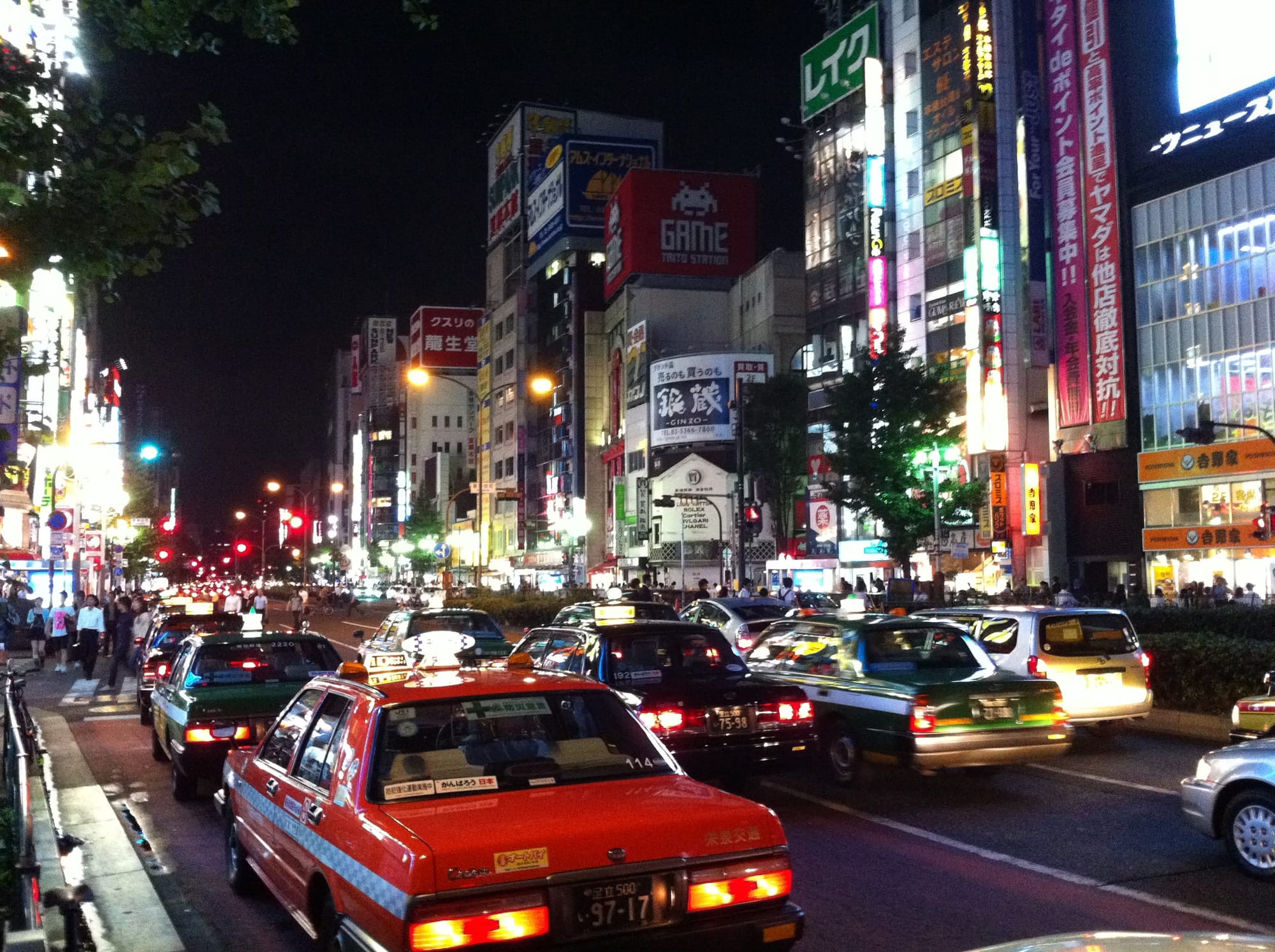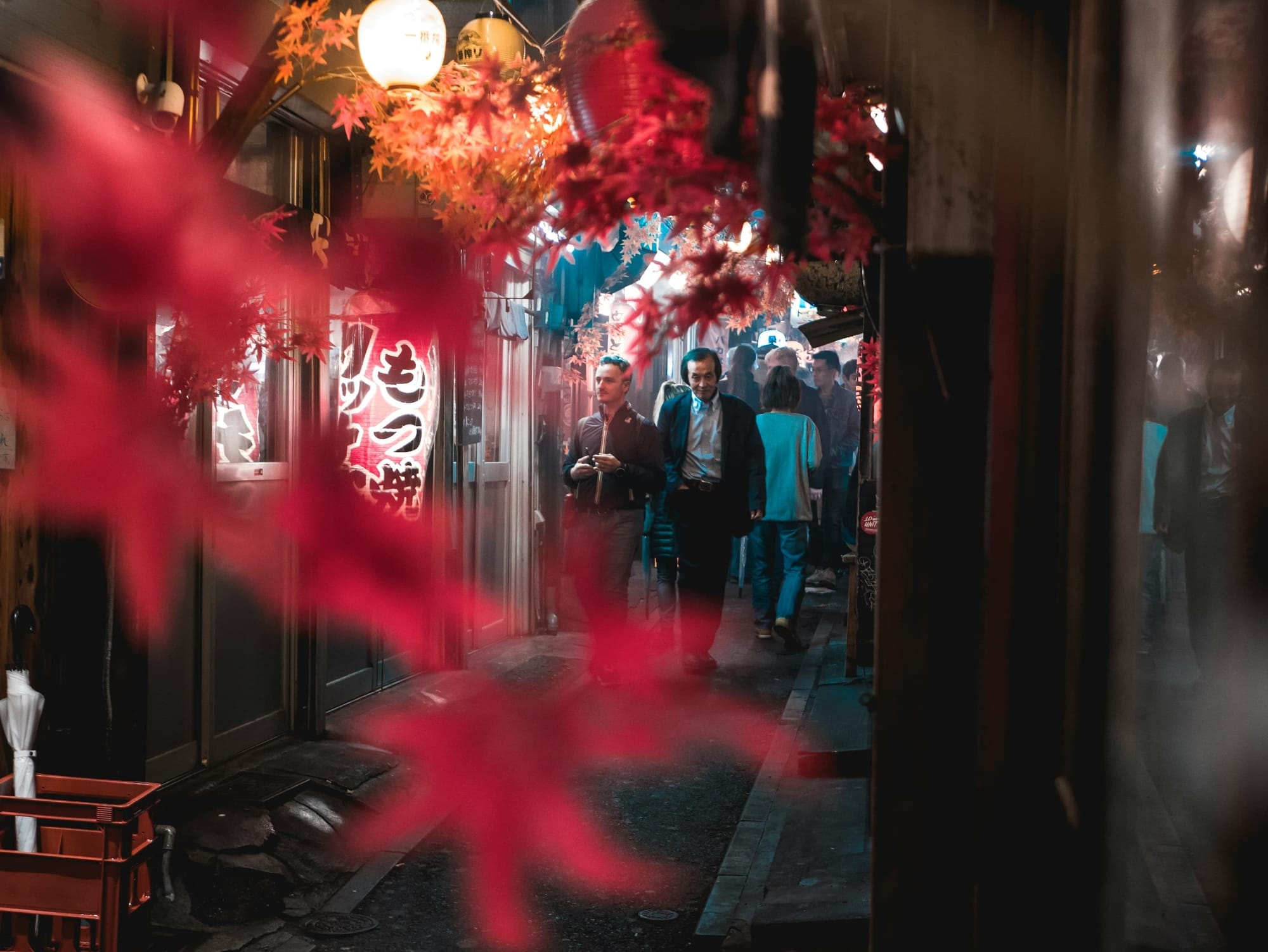Let It Grow
An argument for preserving the intimacy, resilience, and dynamism created in postwar Tokyo—and exporting it across the world

Hi everyone,
This week, a brief consideration of a recent book on Tokyo urbanism that, after going out of print, is now available again and worth your consideration. If you pick up a copy of Emergent Tokyo, I encourage you to read it along with your maps app’s “street view”; it was a pleasure to visually wander through the places being described.
An administrative note: next week I’ll be celebrating Canadian and American holidays with my family, so you’ll receive the next issue on July 11. Whatever you’re celebrating, I hope you too are able to do so in the company of loved ones.
Until then,
Brian
🔗️ Good links
- 🏢👀 Buildings that caught my eye this week: Studioninedots’ curving green social-housing complex in Amsterdam; Casanova + Hernandez’s “eco park” on the site of a landfill in Albania; a multipurpose rammed-earth building on the Bay of Bangkok by Suphasidh
- 🏅🏆 Kudos to the winners of the 2024 Governor General’s Medals in Architecture, the 2024 National Urban Design Awards, and the 2024 AZ Awards
- 🇰🇷🌆 In light of Emergent Tokyo’s discussion of waterways turned streets, here’s Andrew Russeth writing on Cheonggyecheon in Seoul, a river that was covered over and then uncovered four decades later
- 🌿📽️ The Cultural Landscape Foundation has just released a nearly two-hour-long oral history of the exceptional landscape designer Claude Cormier (1960–2023)
- 🏗️🧑🏻🔧 “Its function, accessibility, and signature 17‑storey atrium seem likely to change radically, denuding this messy public forum for grievance, commerce and service.” Zach Mortice on Helmut Jahn’s iconic James R. Thompson Center in Chicago.
- 🥶🍌 Nicola Twilley’s Frostbite, which is sneakily a book about architecture, is out now, and receives a positive review in the New York Times
- 🏭🏠 Stefan Novakovic considers a new, high-end prefab apartment building in Los Angeles that I’ve been admiring from afar
Frontier Wins 2024 AZ Award

All of us at Frontier were excited last week to learn that our wayfinding designs for the newly built Ontario Court of Justice won the 2024 AZ Award for Experiential Graphic Design. The project helps renew the courtroom experience, recognizing that the court serves complex roles and is on land that many people have called home. We’re grateful for the recognition. Thanks also go to Renzo Piano Building Workshop and NORR Architects Engineers and Planners for their collaboration. You can learn more about the project on Frontier’s website.
Let It Grow

I first visited Tokyo in summer 2011. Despite having grown up in Chicago and lived in Boston and New York, within two hours of my arrival I’d had several urban encounters unlike anything I’d previously experienced. I beelined for Shibuya Crossing, made famous to me in films like Lost in Translation, and was borne across my first “scramble crossing” by a tide of hundreds of people. It seemed to be the size of a football field, and the choreography on display beneath its giant video screens was its own improvised game. Fifteen minutes later—and no more than 300 meters away—I stumbled upon Nombei Yokochō, four row houses along two narrow alleys that contain more than three dozen tiny bars. I’m tall enough that, standing in the middle, I could touch the the people sitting on either side of the alley.
It was as if I had walked casually from Times Square to Boston’s North End, but with the unique qualities of both spaces amplified to an unprecedented degree. I had recently read Rem Koolhaas, and the word that kept coming to mind was delirious. I kept being surprised: that same evening, I walked along Yasukuni Avenue, a canyon of commerce I’d later learn is composed of zakkyo buildings. Here was a city that presented exciting, novel solutions to the challenges facing all urban places: how to accommodate people and traffic, how to enable entrepreneurs to start and flourish with little capital, how to allow people to find and fulfill their niche interests and tastes.
Jorge Alamán and StudioLab’s 2022 book Emergent Tokyo: Designing the Spontaneous City places my yokochō, zakkyo, and other experiences in helpful social, spatial, political, and economic contexts. The book’s argument is in the title. Unlike Western modernist master planning or contemporary corporate-led urbanism, both of which marshal stunning amounts of capital and political power to impose new visions on the city, the Tokyo places that create a city of “intimacy, resilience, and dynamism” are “built from the bottom up by its ordinary inhabitants. Emergent Tokyo cannot be copied wholesale, but it has much to teach anyone who hopes to build a better city.”
In addition to yokochō alleyways and the vertical urban shopping offered by zakkyo buildings, the authors discuss the repurposing of spaces beneath elevated railroads and highways for commercial activity; the intimately scaled streets built atop waterways that are too twisting and narrow for cars; and low-rise neighborhoods that nonetheless achieve peak congenial density. Their miniature case studies—three or four per chapter—are buttressed by photographs and clearly drawn elevations and plans that show how these places look today and how land use evolved over the past century.

Key to nearly all this development is the city’s experience of World War II; I lost count of the number of times the “black-market activity” that sprung up among the ruins was cited as the origin for some lightly formalized and vibrant form of urban commerce or sociality. Without the resources needed for formal reconstruction, “the [postwar] city focused on citizen-led, small-scale redevelopment because it had no choice.” But having no choice eight decades ago means that what got built offers seemingly endless choices today. Not only are these places characterized by independently run establishments offering a dizzying area of goods and services, but they are also flexible, adapting to new trends and developments in ways that block-long supertall condo towers and megamalls cannot. These places in Tokyo show “how a city can choose to evolve by adding layers over its existing cityscape, without resorting to cataclysmic changes that inevitably entail bigger developments and more controlled environments at the expense of human-scale living and spontaneity.” One point the authors don’t make, but seems clear to me: as much investment has gone into these emergent spaces over the decades as might have been gathered by city authorities or a major company to make one dramatic and long-lasting change to the cityscape.
I’m primed to appreciate arguments like this by both my own urban experiences—in Tokyo and elsewhere—and by the discussion catalyzed by adrienne maree brown’s 2017 book Emergent Strategy: Shaping Change, Shaping Worlds. Trusting in people to know what’s best for them—in urbanism, in politics, in so many other domains—is, I believe, a fundamentally humane outlook. And yet it’s a stance that becomes hard to protect in practice. As the authors note, Tokyo itself faces the pressures of real-estate development no differently than do North American and European cities, as evidenced by the pictures on this list of the “most expensive luxury condominiums and apartments” or hybrid commercial-residential complexes like Roppongi Hills. “For emergent urbanism to thrive, we must reawaken [architects] critical and creative capacity to challenge Japan’s corporate-dominated status quo.” Emergent Tokyo is an elegant study of what emergent urbanism looks like, and designers everywhere would do well to consider its lessons.





